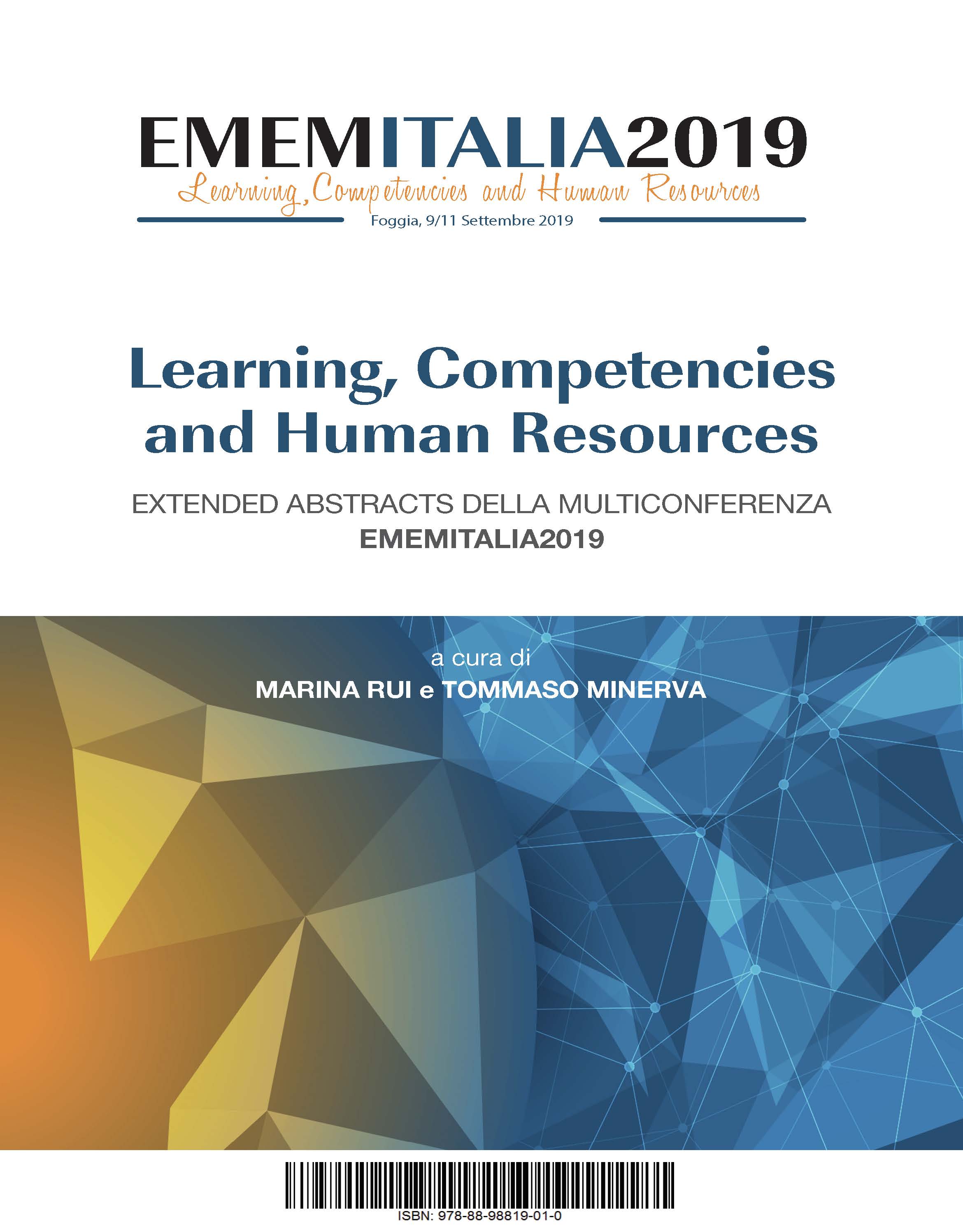Smartphone addiction e percezione delle fake news degli studenti universitari: esiste una correlazione?
- Fake News,
- Critical Thinking,
- Smartphones Addiction
Copyright (c) 2020 Reports on E-learning, Media and Education Meetings

This work is licensed under a Creative Commons Attribution-NonCommercial-ShareAlike 4.0 International License.
Abstract
L’utilizzo dello smartphone nelle fasce di età più giovani è ormai pervasivo e frequente sopratutto per quanto riguarda la fruizione dei contenuti dei vari Social Networks. Questa sovraesposizione costante a flussi informativi che necessitano di elaborazioni cognitive molto veloci può provocare la diminuzione dell’attenzione nella valutazione dei contenuti. La ricerca ha analizzato le percezioni di 60 studenti di un Corso Magistrale per verificare se esiste una correlazione tra l’uso eccessivo dello smartphone e la gestione consapevole delle fake news in cui essi si possono imbattere navigando su Web o nei Social Network. L’analisi del questionario sottoposto agli studenti pur evidenziando una “smartphone addiction” percepita con varia intensità da più del 50%, non ha rilevato una correlazione significativa nella gestione e riconoscimento delle fake news.
References
- Adamczyk, P. D., & Bailey, B. P. (2004, April). If not now, when?: the effects of interruption at different moments within task execution. In Proceedings of the SIGCHI conference on Human factors in computing systems (pp. 271-278). ACM.
- Bolkan, S., & Griffin, D. J. (2017). Students’ use of cell phones in class for off-task behaviors: The indirect impact of instructors’ teaching behaviors through boredom and students’ attitudes. Communication Education, 66(3), 313-329.
- Durak, H. Y. (2018). Investigation of nomophobia and smartphone addiction predictors among adolescents in Turkey: Demographic variables and academic performance. The Social Science Journal.
- El Rayess, M., Chebl, C., Mhanna, J., & Hage, R. M. (2018). Fake news judgement: The case of undergraduate students at Notre Dame University-Louaize, Lebanon. Reference Services Review, 46(1), 146-149.
- Gerosa, T., & Gui, M. (2018). Dall'esclusione digitale al sovrautilizzo: origini sociali, pervasività dello smartphone e rendimenti scolastici. Polis, 32(3), 341-370.
- Gui, M. (2015) Le trasformazioni della disuguaglianza digitale tra gli adolescenti: evidenze da tre indagini nel nord Italia, in Quaderni di Sociologia, vol. 69, pp. 33-55.
- Judd, T.(2014) Making sense of multitasking: the role of Facebook, Computers & Education, 70 (2014), pp. 194-202
- Kibona, L., & Mgaya, G. (2015). Smartphones’ effects on academic performance of higher learning students. Journal of Multidisciplinary Engineering Science and Technology, 2(4), 777-784.
- King, A. L. S., Valença, A. M., Silva, A. C., Sancassiani, F., Machado, S., & Nardi, A. E. (2014). Nomophobia: Impact of Cell Phone Use Interfering with Symptoms and Emotions of Individuals with Panic Disorder Compared with a Control Group. Clinical practice and epidemiology in mental health, 10, 28- 35.
- Kushlev, K., Proulx, J., & Dunn, E. W. (2016, May). Silence your phones: Smartphone notifications increase inattention and hyperactivity symptoms. In Proceedings of the 2016 CHI Conference on Human Factors in Computing Systems (pp. 1011-1020). ACM.
- Lazer, D. M., Baum, M. A., Benkler, Y., Berinsky, A. J., Greenhill, K. M., Menczer, F., ... & Schudson, M. (2018). The science of fake news. Science, 359(6380), 1094-1096.
- Lee, Y. K. et al. (2014) The Dark Side of Smartphone Usage: Psychological Traits, Compulsive Behavior and Technostress, sta in Computers in Human Behavior, vol.31, pp. 373-383.
- Levitin, D. J. (2014). The organized mind: Thinking straight in the age of information overload. Penguin.
- Martin Pielot and Luz Rello. 2015. The Do Not Disturb challenge. In Proceedings of the ACM Conference Extended Abstracts on Human Factors in Computing Systems (CHI EA ’15): 1761–1766.
- Okoshi, T., Ramos, J., Nozaki, H., Nakazawa, J., Dey, A. K., & Tokuda, H. (2015, March). Attelia: Reducing user's cognitive load due to interruptive notifications on smart phones. In 2015 IEEE International Conference on Pervasive Computing and Communications (PerCom) (pp. 96-104). IEEE.
- Renjith, R. (2017). The effect of information overload in digital media news content. Communication and Media Studies, 6(1), 73-85.
- Samaha, M., & Hawi, N. S. (2016). Relationships among smartphone addiction, stress, academic performance, and satisfaction with life. Computers in Human Behavior, 57, 321-325.
- Statista (2018) https://www.statista.com/statistics/241462/global-mobile-phone-website-traffic-share/
- Wang, Y. (2007), “Riding to the future - an investigation of information literacy skills of students at an urban university as applied to the web environment”, International Journal on ELearning, Vol. 6 No. 4, p. 593.
